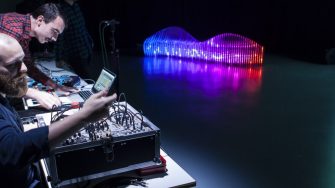
Project summary
Expressive music playing is much more than just the right notes. For wind instruments, a beautiful, expressive performance requires fine control and coordination of several physical gestures that include breath pressure, mouth geometry and forces, tongue action, and finger motions. The non-linear physics of these gestures and their interactions is subtle and poorly understood.
Using techniques unique to this lab, this study aims to give a deeper understanding of the interesting physics involved and to investigate the complete pathway between performer and listener that involves intention, physiology, physics, acoustics, perception and assessment. It aims to have important practical results, leading to advances in learning an instrument.
Objectives
- to understand the basic physics underlying how time-varying control parameters affect the acoustics of a single note and how they interact
- to measure and to understand how and why players vary the control parameters to achieve desired transitions between successive notes
- to understand the physics behind the interaction amongst the different control parameters during a musical phrase and its use in expressive music. How do different trajectories through control parameter space produce the various aspects of an expressive musical performance as analysed physically – and as judged by listeners?
- to determine how the design and set-up of an instrument affect its physics and the consequent ability of players to execute the desired parameter trajectories
- to use our understanding to ‘reverse engineer’ performance: to estimate what gestures have been used to produce given sounds. This will allow a knowledge of control parameter trajectories be used to help teachers and students.
Benefits & impacts
Music is almost omnipresent in Australian culture; most people are exposed to it for hours per day. More than 20% of Australian students learn to play a musical instrument, often a wind instrument. This project investigates the physical and psychological processes involved in playing elegant, expressive music, and how experts and students differ. Its outputs, which we shall publicise on our popular music science websites, will influence music learning and teaching.
The science of music is exciting to many high school students because of its intrinsic interest, the popularity of music and the fact that they can do their own interesting experiments. This project answers questions often asked by music students who want ‘to sound better’. But importantly, it will also interest some high school students in physics, psychology and music research.
This contribution to the world’s knowledge and culture will enhance Australia’s already highly regarded scientific and cultural reputation.
Researcher
Professor Emery Schubert – Empirical Musicology Laboratory, School of the Arts & Media
Collaboration with UNSW Music Acoustics Group: Professors Joe Wolfe, John Smith and others in the School of Physics
Funding body
Australian Research Council / Discovery Project
Research area
Music perception and production
